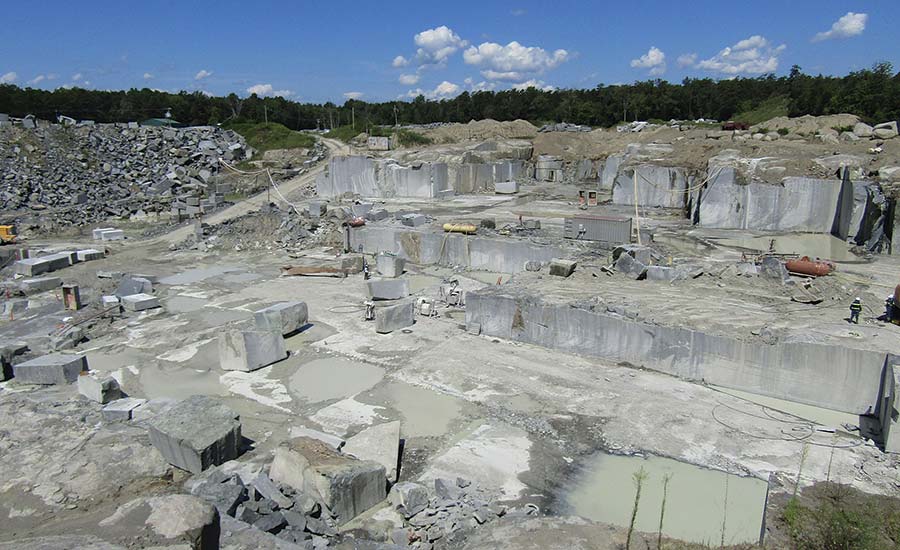Revealing the Mysteries of Granite Quarrying: Where Stamina and Style Meet
The globe of granite quarrying is a world where the raw toughness of nature converges with human artistry to produce frameworks that stand the examination of time with an air of sophistication. From the depths of quarries to the meticulous polishing in workshops, the process of changing granite into building marvels is an intricate dancing of practice and innovation. As we peer right into the depths of this ancient craft, we begin to reveal the covert ins and outs that form the really significance of our constructed setting.
The Origins of Granite Quarrying
In the annals of architectural background, the origins of granite quarrying are shrouded in a tapestry of old craftsmanship and geological wonders. Going back to old Egypt and Mesopotamia, the removal of granite from quarries noted the start of a journey that would eventually bring about the creation of several of the globe's most legendary frameworks.
Granite quarrying's roots can be mapped to the skilled artisans who acknowledged the stone's durability and visual allure. Via a mix of primitive tools and large resolution, these early quarry workers discovered granite blocks that would certainly end up being the foundation of worlds.
As people evolved, so did the strategies of quarrying granite. The Romans, renowned for their design prowess, developed advanced approaches for removing granite to build monuments, holy places, and roadways that stood the test of time.
The heritage of these ancient quarrying techniques proceeds to shape modern-day style, with granite continuing to be a sign of toughness and beauty in construction jobs around the world. (granite quarries in south africa)
Tools of the Quarrying Trade
The advancement of granite quarrying methods from ancient civilizations to modern times highlights the critical duty played by the devices of the quarrying trade in shaping the industry's practices. In old times, quarrying tools were rudimentary, typically including knives, hammers, and wedges made from products like bronze or iron. These tools required substantial manpower and time to remove granite obstructs from quarries.

Additionally, the intro of pneumatic tools and high-powered machinery has dramatically decreased the physical labor required in quarrying operations, improving worker safety and security and productivity. As the quarrying market continues to innovate, the devices of the profession continue to be at the leading edge of driving development and shaping the future of granite extraction.
Removing Blocks of Granite
Making use of accuracy machinery and progressed strategies, the removal of granite blocks from quarries has actually come to be an advanced procedure in the modern-day quarrying sector. The preliminary action involves recognizing the place and size of the granite down payment to determine the most efficient removal approach. When an appropriate website is picked, the removal process begins with the drilling of holes for the placement of nitroglycerins. Controlled blasting techniques are after that utilized to disintegrate the visite site granite right into workable sections.

Polishing and Completing Methods
To achieve a perfect surface area on granite blocks, competent craftsmens utilize a series of precise polishing and ending up methods. After the initial removal and shaping procedures, the granite blocks undergo an extensive polishing stage to improve their all-natural charm and toughness. One usual technique made use of in polishing granite is diamond abrasion, where commercial rubies are utilized to grind and brighten the stone to a smooth finish. This process not just develops a shiny surface area but likewise ensures harmony in shade and texture throughout the granite block.
In addition to polishing, ending up strategies are related to more improve the granite's appearance. These methods may consist of flaming, honing, or cleaning, each offering unique textures and finishes to suit different visual choices. Flaming, for instance, includes subjecting the granite surface area to high temperature levels to produce a rough, textured surface, ideal for exterior applications where slip-resistance is necessary. Refining, on the various other hand, provides a matte finish that is smooth to the touch, perfect for indoor counter tops and flooring. click here for more By thoroughly choosing and applying these polishing and finishing techniques, artisans can change raw granite obstructs into beautiful items that display both stamina and style.

Ecological Effect and Sustainability
With the expanding emphasis on environmental consciousness in the industry, granite quarrying practices are significantly scrutinized for their impact on natural sources and long-lasting sustainability. Furthermore, the transportation of granite from quarries to refining centers generates carbon exhausts, even more adding to environmental degradation.
To alleviate these influences and ensure sustainability in granite quarrying, industry stakeholders are embracing various procedures. Carrying out innovative modern technologies to lower power consumption and water use, recovering quarried land for eco-friendly restoration, and promoting liable sourcing practices are some techniques being utilized. Certifications such as the Woodland Stewardship Council (FSC) and the Management in Power and Environmental Style (LEED) assistance customers identify environmentally friendly granite products.
Verdict
Finally, granite quarrying is a procedure that requires specialized devices and techniques to remove blocks of granite and brighten them to a high degree of surface. While the environmental impact of quarrying can be substantial, efforts are being made to improve sustainability practices in the market. On the whole, granite quarrying is a fragile balance between utilizing the strength and beauty of this all-natural rock while minimizing its influence on the environment.
Comments on “Discovering Granite Quarries in South Africa: A Comprehensive Overview”